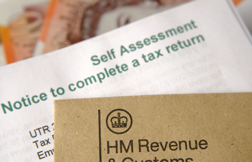In such cases, a Members' Voluntary Liquidation (MVL) may be the most appropriate course of action. This process involves appointing a licensed Insolvency Practitioner to formally close the company, and professional fees will be incurred for their services.
Through an MVL, the final distribution of profits can be treated as capital, allowing you to utilise the Capital Gains Tax (CGT) Annual Exemption, which is £3,000 for the 2025/26 tax year. Any capital gains exceeding this exemption are subject to a CGT rate of 24%, which is lower than the higher rates of income tax.
Additionally, you may be eligible for Business Asset Disposal Relief (formerly known as Entrepreneurs’ Relief), which, for disposals made on or after 6 April 2025, reduces the CGT rate from 24% to 14% on qualifying gains, subject to a lifetime allowance of £1 million.
It's advisable to consult with a tax professional to fully understand the implications and ensure that all conditions for these reliefs are met.








